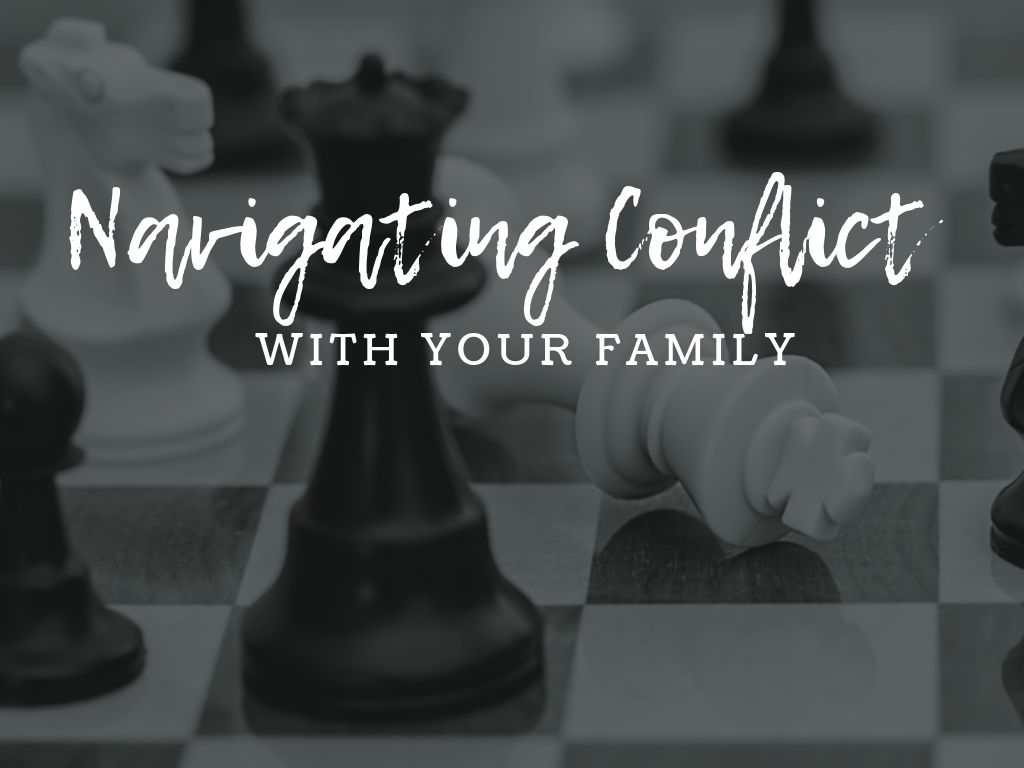 As my husband and I neared our third wedding anniversary, big life decisions dominated our conversations in the evenings. We routinely discussed things like: Are we ready to have kids? Should we move closer to family? How can we better stay within our budget? Should Meatless Mondays be a part of our meal rotation? (You think I’m kidding, but this topic created a lot of drama and conflict for my husband, a self-professed “meat-atarian.”)
As my husband and I neared our third wedding anniversary, big life decisions dominated our conversations in the evenings. We routinely discussed things like: Are we ready to have kids? Should we move closer to family? How can we better stay within our budget? Should Meatless Mondays be a part of our meal rotation? (You think I’m kidding, but this topic created a lot of drama and conflict for my husband, a self-professed “meat-atarian.”)
Some nights I would go to sleep feeling frustrated and helpless. I couldn’t persuade my husband to see things from my point of view and I felt incapable of finding resolutions. I fell into an unhealthy pattern of avoiding conversation altogether. Instead of talking, I spent evenings organizing closets, kitchen drawers, and bathroom cabinets. Our house was in order, but we were not.
Around this time I entered the final stretch of a graduate degree in Educational Foundations and I found myself in a class that transformed how I communicate. I quickly realized the skills from the unassuming “Conflict Resolution for Educators” class worked in my classroom AND my house. Within just a few months, I didn’t dread or avoid tough conversations. It’s been eight years since I took the class and I still use these skills today. (My house is also a lot less organized now.)

4 Tips on Handling Conflict
1. Everyone handles conflict differently.
We each naturally handle conflict in a way with which we’re comfortable. Our upbringing, personality, experiences, and relationships influence our conflict style. None of these conflict styles are necessarily wrong, but they can be ineffective in certain situations. Avoiding a conversation by cleaning out my closet was not helpful in working towards a resolution with my husband. Knowing your style and the styles of others can be helpful because you better understand why people act a specific way when in conflict.
2. A lot of times we focus on our wants, but not our needs.
When you’re navigating conflict with a spouse or a child, it’s important to step back and assess both of your NEEDS. Sometimes, because we’re so focused on what we want, we miss what we need. Last week, my five year old struggled through bedtime. She kept leaving her bed, crying, and making any excuse to break the routine. After her fourth trip to the bathroom, I pulled her into my lap and asked what was wrong. At first she told me she wasn’t tired, but after talking for a few minutes she mentioned that I spent one-on-one time with her sisters, but not her. She wanted some time with me because she needed to feel like she was valued and loved like her sisters. I’m not an advocate for giving into every bedtime request, but she clearly needed some time with mom and I happily complied.
3. “I” messages are very cheesy and very effective.
An “I” message looks something like this: I feel (emotion) when (whatever is happening) because (reason for your reaction). Yes, this is very formulaic. Yes, this will sound cheesy and robotic when you first use it. But, it’s also incredibly helpful. Here are a few examples:
- I feel unimportant when you don’t put your phone down when I’m talking to you because it seems like you’re prioritizing other things over me.
- I feel belittled when you don’t back up my decision in front of the kids because it seems like you don’t value my parenting.
They also work well with kids:
- I’m frustrated when you don’t put your dirty clothes where they belong because it makes more work for mommy and it also takes away time I could be spending with you.
- I feel disrespected when you don’t listen to me when I ask you to put your shoes on at the playground.
4. “I” messages are most effective when you know what you’re feeling and why.
They are effective partly because it forces us to identify what we’re feeling and why. We use a lot of emotion words in our house. Sometimes mad, sad, scared, or happy is enough to describe my kids’ feelings, but sometimes they’re looking for something more specific like overwhelmed, criticized, irritated, or uncertain. Stopping to have a conversation about what they’re feeling is helpful because it allows them the chance to talk through it, and it often helps them articulate why they’re feeling that way. It’s incredibly helpful when my kids can identify what emotion they’re feeling and why.

With four very different kids ages seven months to seven years, conflict is a daily occurrence, but it doesn’t have to be a stressful struggle. We try to view every conflict in our family as an opportunity to practice how to communicate better and strengthen our relationships. With six people under one roof, we get a lot of practice and we fail a lot, but we haven’t met a conflict we couldn’t resolve yet.













